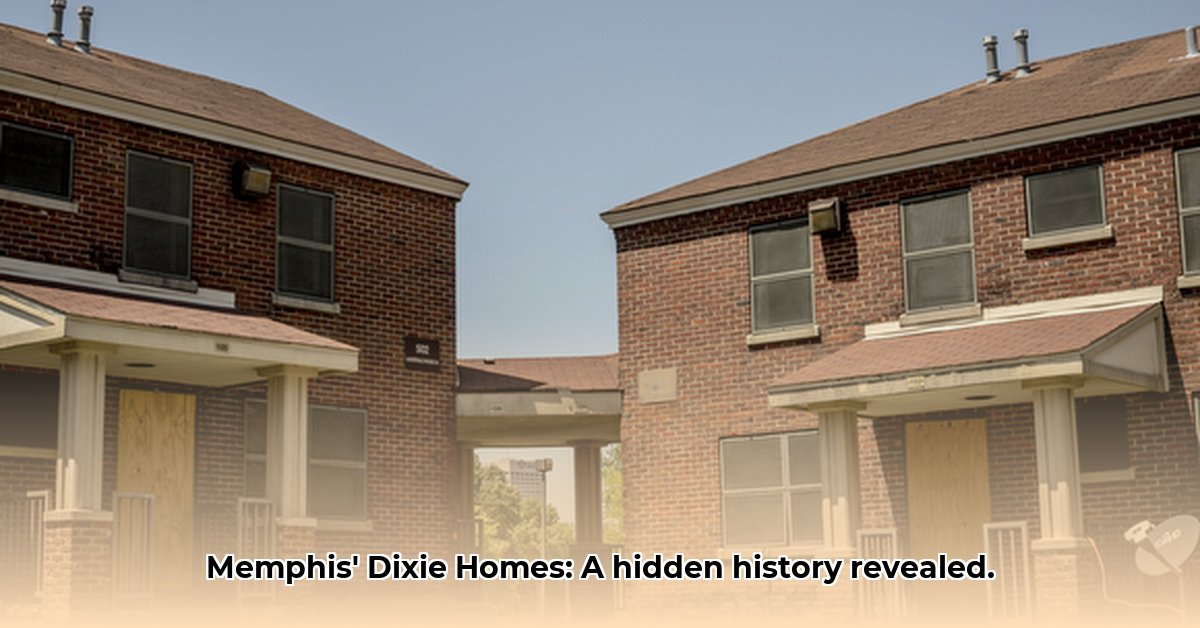
Dixie Homes, a public housing project in Memphis, Tennessee, built in the mid-20th century, stands as a powerful testament to the enduring impact of segregation and the ongoing struggle for equitable housing. Its story, a complex narrative of both hardship and resilience, offers invaluable lessons for understanding and addressing the challenges of affordable housing today. The project's legacy continues to shape conversations about systemic inequality and the need for truly inclusive communities.
The Shadow of Segregation: Dixie Homes' Troubled Beginnings
The very name "Dixie Homes" evokes the painful legacy of the Confederate South and the pervasive segregation that shaped mid-20th century America. The project, while intended to alleviate overcrowding, became a stark example of systemic racism. The initial allocation of units, its location, and the resources allocated all contributed to a pattern of discriminatory practices. Many scholars argue that such projects, rather than solving housing problems, often exacerbated existing inequalities. The deliberate placement of Dixie Homes further away from affluent neighborhoods serves as a painful reminder of how seemingly neutral decisions can perpetuate cycles of disadvantage. This geographic isolation contributed to a range of challenges for its residents, creating a self-perpetuating cycle of poverty and limited opportunity. How could a project intended to help become a symbol of systemic failure? This question demands careful consideration.
A Community Finds Strength: Resilience in the Face of Adversity
Despite the overwhelming challenges of segregation and inadequate resources, a vibrant and resilient community emerged within Dixie Homes. Residents forged strong bonds, creating a social fabric built on mutual support and shared experiences. Oral histories collected from former residents paint a vivid picture of neighbors helping neighbors, shared meals, and children playing together – a testament to the human spirit's ability to thrive even under extreme adversity. These accounts highlight the importance of community in mitigating the negative impacts of systemic inequality. How did this community spirit endure despite the hardships they faced? The answer lies in the strength and resilience of the residents themselves.
A Broken Promise: The Slow Decline and Demolition of Dixie Homes
Over time, the initial promises made to Dixie Homes residents went unfulfilled. Decades of underinvestment, coupled with broader societal shifts, led to a decline in living conditions. Crime rates increased, and a sense of despair settled over the community. The eventual demolition of Dixie Homes serves as a symbol of a failed social experiment, highlighting the devastating consequences of systemic neglect. This raises critical questions about government responsibility and the need for long-term, sustainable, and equitable housing policies. What caused this decline? Was it solely a lack of resources, or were deeper systemic issues at play? These are questions that continue to fuel important dialogues today.
Learning from the Past: Building a Better Future
The story of Dixie Homes isn't simply a tale of failure; it's a crucial case study. By examining its shortcomings, future housing initiatives can learn from past mistakes. The redevelopment efforts that followed the demolition present both opportunities for analysis and a chance to build upon these lessons. Yet, some experts argue that the new developments failed to fully address the underlying inequalities that plagued Dixie Homes. Did these improvements truly benefit former residents, or did the legacy of segregation persist? This question requires further in-depth study.
Redevelopment and its Uneven Legacy
The redevelopment following Dixie Homes' demolition has produced a mixed legacy. While certain improvements are evident, inequalities persist, leading to an ongoing debate about the project's true success. Did the redevelopment adequately address the needs of former residents? Did it successfully break the cycle of disadvantage, or did the shadow of segregation linger? The long-term impacts remain complex and demand meticulous analysis.
How Did Memphis Public Housing Redevelopment Impact Former Residents' Socioeconomic Outcomes?
The demolition and redevelopment of Dixie Homes present a crucial case study in understanding the complex impact of such projects on residents' socioeconomic outcomes.
The Promises and Realities of Redevelopment
Redevelopment projects often promise improved living conditions, safer neighborhoods, and better opportunities. For some former Dixie Homes residents, these promises were met. However, many faced significant challenges during relocation, including the disruption of established networks and the increased cost of living in the new housing.
Measuring Success: Beyond Bricks and Mortar
Measuring the success of redevelopment goes beyond physical improvements. Researchers must consider the impact on social cohesion, well-being, and long-term economic mobility. Longitudinal studies are needed to track residents' lives over time, capturing both positive and negative outcomes.
The Need for Longitudinal Studies
Accurate assessments require in-depth, longitudinal studies that track residents' lives. Such studies should capture both quantitative and qualitative data to fully understand the multifaceted impact of redevelopment.
Lessons Learned: Charting a Better Path
The experiences of Memphis' public housing redevelopments offer valuable lessons for future projects. Future initiatives should prioritize community engagement, resident input, and comprehensive support services to help residents achieve economic stability and well-being.
The story of Dixie Homes remains a powerful reminder of the enduring consequences of segregation and the urgent need for equitable housing policies. It serves as both a cautionary tale and a call to action to build a more inclusive and just future.